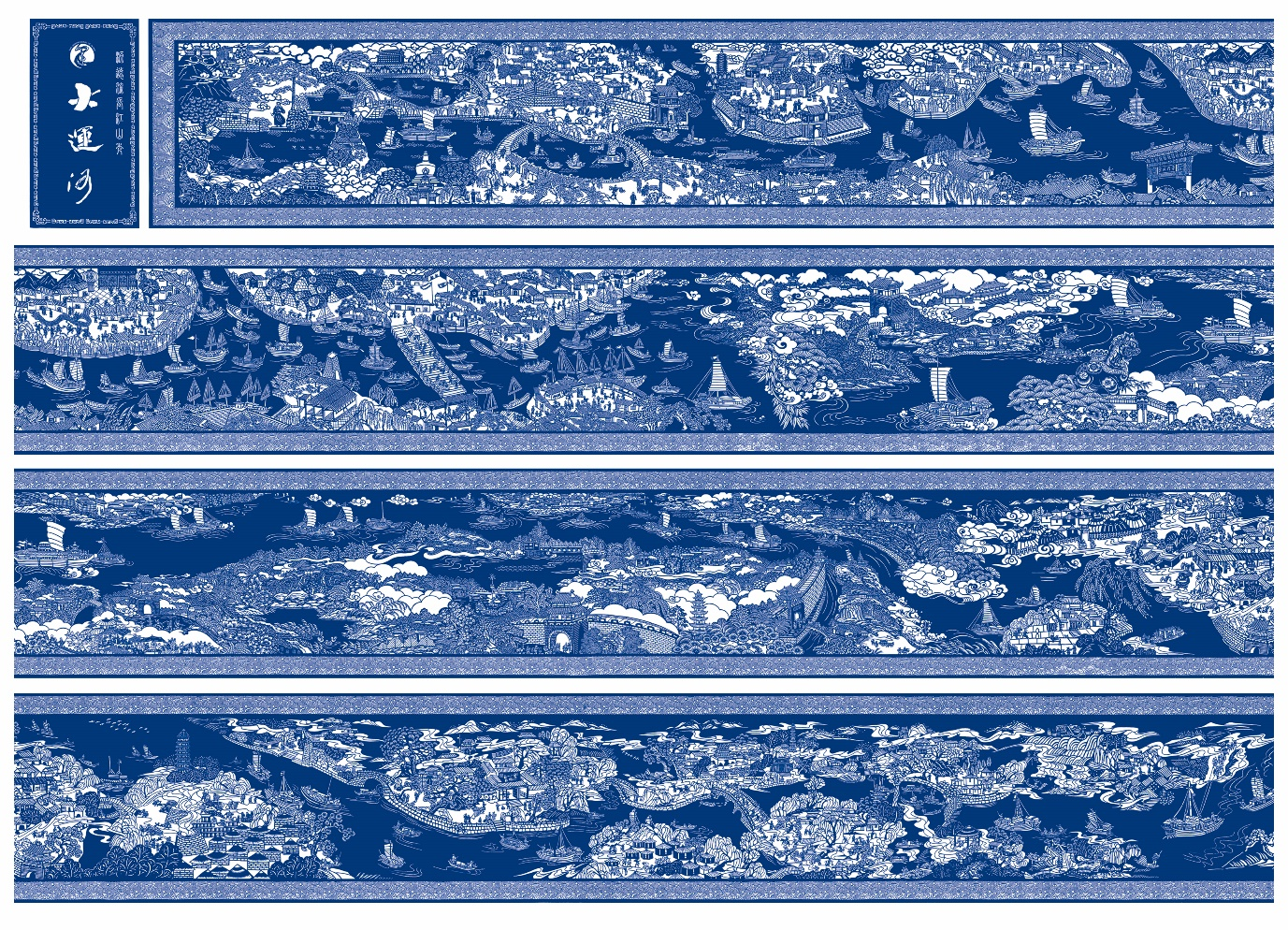The winding ancient Grand Canal serves as a cradle for the rich cultural heritage of the Chinese nation, embodying over two thousand years of human civilization’s developmental history. To celebrate the 10th anniversary of Chinese paper-cut being recognized on the UNESCO Representative List of the Intangible Cultural Heritage of Humanity, Yang Zhaoqun, a national-level paper-cut inheritor from Jintan, Jiangsu Province spearheaded the “Grand Canal” project to craft an extensive paper-cut scroll. This initiative brought together 11 paper-cut artists from 6 provinces and 2 municipalities along the Grand Canal to form the project’s dedicated team for creating intricate paper-cut artwork. Over the course of about a year and a half, the project entailed thorough material research, on-site inspections, exchanges on artistic techniques, expert discussions, on-site sketching, etc., Yang and his team have created a huge paper-cut work that measures 101.2 meters long and 1.16 meters high (103.80 meters x 1.48 meters when framed).
This artwork depicts the Grand Canal of China. The canal encompasses the Grand Canal of the Sui and Tang Dynasties with Luoyang as its center during the Sui, Tang, and Song Dynasties, the Jing-Hang Grand Canal stretching from Beijing to Hangzhou throughout the Yuan, Ming, and Qing Dynasties, and the Eastern Zhejiang Canal that extends from Ningbo to the sea and links to the Maritime Silk Road. It traverses eight provincial administrative regions, including Beijing and Tianjin and Hebei, Shandong, Henan, Jiangsu, Anhui, and Zhejiang Provinces, and connects the vital water systems of the Haihe, Yellow, Huaihe, Yangtze, and Qiantang Rivers.
The scroll begins in Tongzhou district of Beijing, renowned for its rich canal culture and concludes in the picturesque city of Hangzhou with its expansive waters and enchanting landscapes. In the scroll, the paper-cut artists meticulously illustrated the scenic vistas, folk traditions, regional customs, and cultural treasures along the canal route. The paper-cut artwork faintly depicts a vibrant marketplace, where small bridges arch over meandering waterways, traditional houses with white walls and green tile eaves line the riverside, colorful sails dot the waters, and a lively atmosphere hums with bustling crowds. This piece weaves together a myriad of elements from cities along the canal, encompassing captivating natural landscapes and unique ancient structures. It includes iconic landmarks such as the Great Wall and Beihai Park in Beijing, Tianjin’s Jinmen Hometown, Luoyang’s White Horse Temple and Longmen Grottoes, Xuzhou’s Yunlong Mountain, Yangzhou’s Dongguan Street and Shi Kefa Memorial, as well as ancient residences in the Jiangnan region (south of Yangtze River). The artwork also features bustling boats on the canal, elegant canal bridges, and rustic barns along the coast. Through vibrant and lifelike artistic renditions, it vividly portrays the spirit, customs, and tales of the canal, immersing viewers in a rich tapestry of canal culture and civilization.









